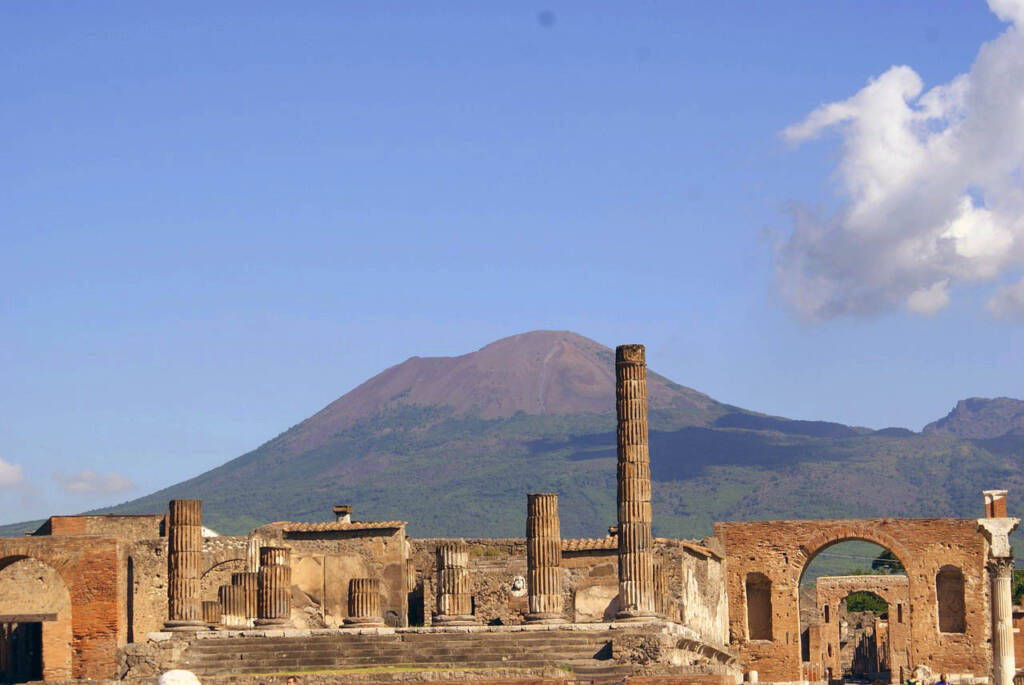
POMPEI
1 hour from Positano.
Estimated time for the visit: at least minimum 2 hours.
- Buried in 79 AD. from the ashes of one of the most devastating volcanic eruptions ever to occur, Pompeii is a splendid example of a city of the imperial era. In the excavation area, among the most important ruins, we find the Forum with the Basilica, the largest building in Pompeii, the Temple of Apollo, the Bagni di Stabia, the Casa di Vetti, the most richly decorated and the Villa dei Mysteries which contains the most famous frescoes.
ERCOLANO / HERCULANEUM
1 -1/2 hour from Positano.
20 minutes from Pompeii.
10 minutes from Oplontis.
Estimated time for the visit: 2 hours.
Founded, according to legend, by Hercules, this beautiful city was buried by mud, like Pompeii, following the eruption of Vesuvius in 79 AD. In addition to the thermal baths and the theatre, the excavations have brought to light a series of patrician villas in an excellent state of conservation. In some, splendid columns, frescoes and mosaics are still visible.
Most of the objects, the classical statues, the frescoes and the mosaics found in the Vesuvian excavations are visible in the archaeological museum of Naples.
Live and discover the splendid Amalfi Coast through our exclusive services!
Packages
VESUVIO/ VESUVIUS
1- 1/2 hour from Positano
Duration of the visit: 3 hours
However many scenarios and predictions science may formulate, the volcano will decide when to wake up.
Vesuvius is a dormant but active volcano. The last eruption was in 1947, after which the smoke that always came out of the crater stopped. An eruption like the one that destroyed Pompeii in 79 AD it could actually repeat itself at any moment. Already in 1845 Ferdinand II of Bourbon founded
the Vesuvian Observatory, to try to predict the eruptions of the volcano. Today the Observatory is one of the most advanced scientific institutions dedicated to volcanology in the world. Vesuvius is monitored 24 hours a day by numerous scientists from all over the world, who observe the movements of the mountain and elaborate possible future scenarios.
Vesuvius is beautiful. It became a National Park in 1972. A climb to its top is very interesting.
The carriage road reaches up to 1 km from the top and this last stretch must be done on foot. There is no vegetation, only lava stone and pumice stones. A disturbing but fascinating scenario. The maximum diameter of the crater reaches 600 meters and looking out from the edge, you can see the “cap” 200 meters below. A little smoke can still be seen rising from the walls of the mouth.
The view of the Gulf of Naples, with the islands of Ischia and Procida on one side and Capri on the other, is extraordinary from the top of Vesuvius
OPLONTIS (TORRE ANNUNZIATA)
10 minutes from Pompeii.
Estimated time for the visit: 1 hour.
- Splendid, huge Roman villa recently unearthed of the same type as those found in Herculaneum.
It is in an excellent state of conservation and contains splendid frescoes, among the most beautiful remaining from the Roman era.
Most of the objects, the classical statues, the frescoes and the mosaics found in the Vesuvian excavations are visible in the arch
